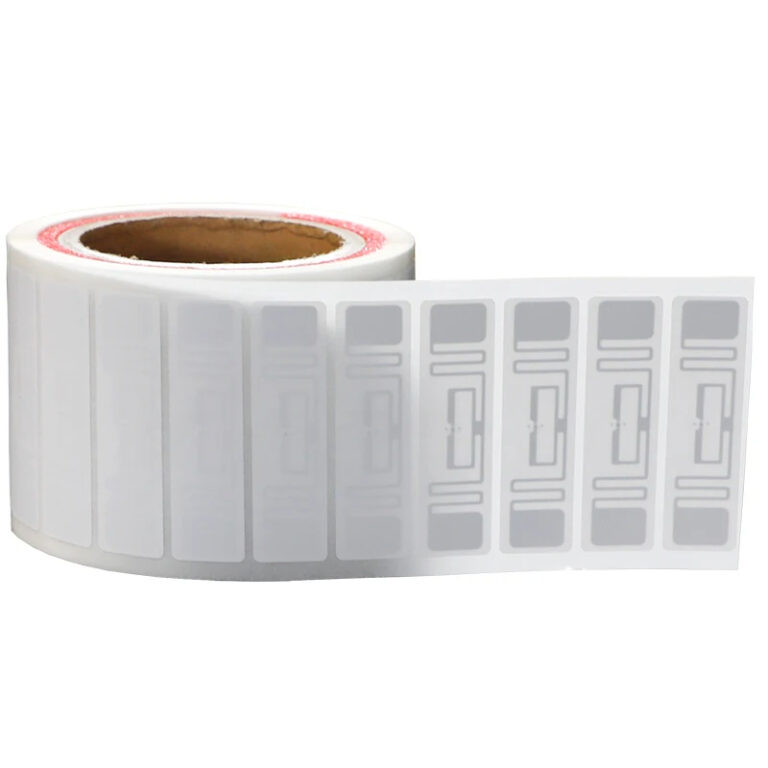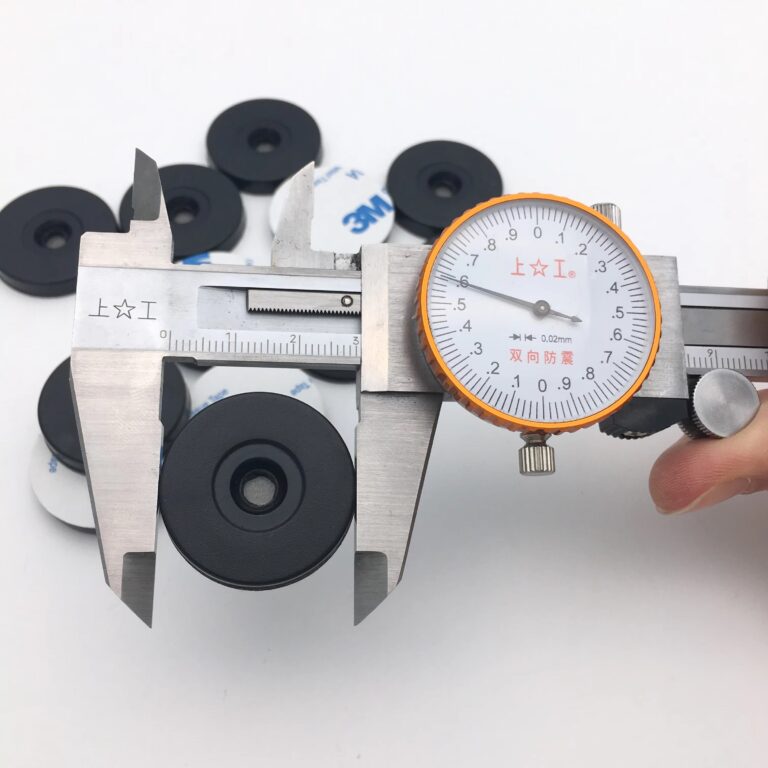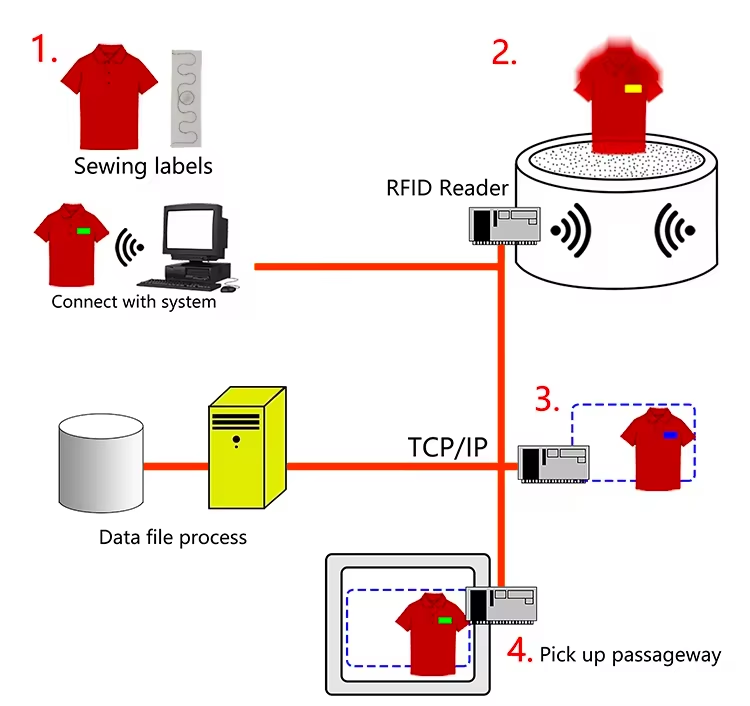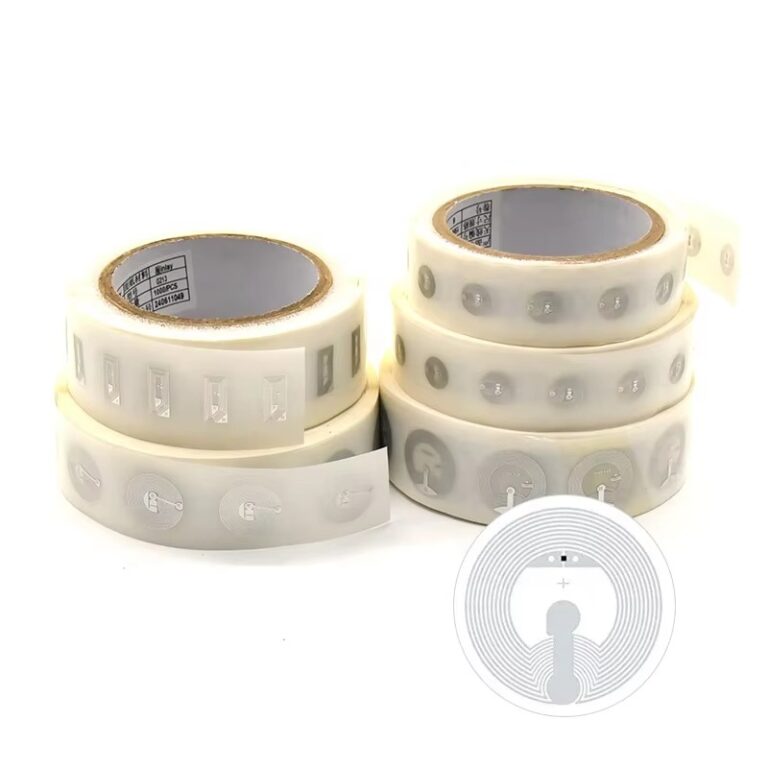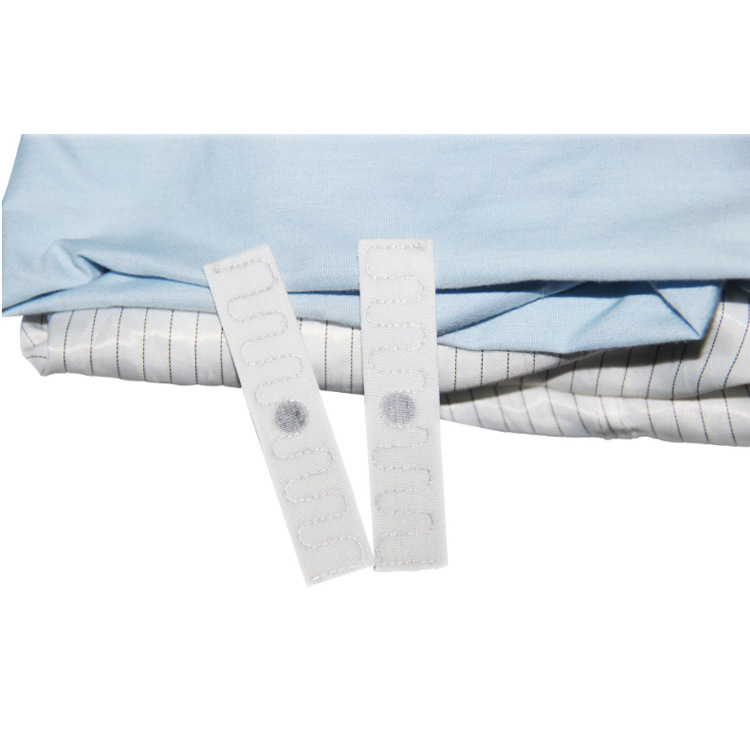RFID Clothing Tags: Why Are They the Future of Apparel?
Introduction to RFID Technology
Welcome to the world of RFID technology, where tracking and managing inventory becomes a breeze. RFID, or Radio Frequency Identification, uses electromagnetic fields to automatically identify and track tags attached to objects. This technology has been around for decades, but its integration into the apparel industry is relatively new and revolutionary. Let’s dive into why RFID clothing tags are set to transform the future of apparel.
What Are RFID Clothing Tags?
RFID clothing tags are small electronic devices attached to garments that store information and communicate with RFID readers via radio waves. These tags can be embedded in labels, sewn into seams, or even printed directly onto the fabric. They come in various forms and functionalities, making them versatile for different applications within the apparel industry.
How RFID Works
RFID technology consists of three main components: the RFID tag, the reader, and the antenna. The tag, equipped with a microchip and antenna, stores information about the item. When an RFID reader emits a signal, the tag responds by transmitting its stored data back to the reader. This process enables quick and accurate data collection without the need for line-of-sight scanning.
Types of RFID Tags
There are two primary types of RFID tags used in clothing: passive and active. Passive tags, which are most commonly used, do not have their own power source and rely on the reader’s signal to transmit data. Active tags, on the other hand, have their own power source, allowing them to transmit data over greater distances. Each type has its advantages depending on the specific needs of the apparel company.
Benefits of RFID Clothing Tags
The integration of RFID technology into clothing offers numerous benefits that are transforming the apparel industry. From inventory management to customer experience, let’s explore these advantages in detail.
Enhanced Inventory Management
Real-Time Tracking
RFID tags enable real-time tracking of inventory, providing retailers with instant visibility into stock levels. This capability allows for quicker restocking and reduces the likelihood of out-of-stock scenarios, enhancing overall inventory accuracy.
Accurate Stock Levels
With RFID technology, retailers can achieve near-perfect inventory accuracy. The automated nature of RFID reduces human error associated with manual stock counts, ensuring that the data reflects true stock levels at all times.
Improved Customer Experience
Faster Checkouts
Imagine a world where customers no longer have to wait in long checkout lines. RFID technology enables faster checkouts by allowing multiple items to be scanned simultaneously. This efficiency not only saves time but also enhances customer satisfaction.
Personalized Shopping
RFID tags can provide valuable data about customer preferences and shopping habits. Retailers can use this information to offer personalized recommendations and promotions, creating a more tailored and engaging shopping experience for customers.
Security and Anti-Theft Measures
Theft Reduction
One of the significant advantages of RFID tags is their ability to deter theft. By tracking the movement of items within the store, RFID systems can quickly identify any suspicious activities and alert staff, reducing the risk of theft.
Authenticity Verification
RFID tags can also be used to verify the authenticity of high-value items. This feature is particularly beneficial in combating counterfeit products, ensuring that customers receive genuine merchandise.
Challenges and Considerations
While RFID technology offers numerous benefits, it also presents certain challenges that need to be addressed for successful implementation.
Cost Implications
The initial investment in RFID technology can be substantial, particularly for small to mid-sized retailers. However, the long-term benefits, such as reduced labor costs and improved inventory accuracy, often outweigh the initial expenses.
Privacy Concerns
Privacy is a significant concern when it comes to RFID technology. Consumers may be wary of their personal data being collected and stored. Therefore, it is crucial for retailers to implement robust data protection measures and communicate transparently with customers about how their data will be used.
Integration with Existing Systems
Integrating RFID technology with existing inventory management and point-of-sale systems can be complex. Retailers must ensure that their current infrastructure is compatible with RFID and may need to invest in additional software and hardware to support the new technology.
Case Studies of RFID in Apparel
Several leading brands have successfully integrated RFID technology into their operations, showcasing the potential benefits and providing valuable insights for other retailers.
Leading Brands Using RFID
Brands like Zara, H&M, and Macy’s have implemented RFID technology to enhance their inventory management and improve customer experience. These brands have reported significant improvements in stock accuracy and overall operational efficiency.
Success Stories and Metrics
Zara, for example, has seen a 98% stock accuracy rate after implementing RFID. H&M reported a 20% reduction in out-of-stock items, and Macy’s has achieved a 60% reduction in inventory costs. These success stories highlight the transformative impact of RFID technology on the apparel industry.
The Future of RFID in the Apparel Industry
As RFID technology continues to evolve, its future in the apparel industry looks promising. Emerging innovations and trends are set to further revolutionize how retailers manage inventory and engage with customers.
Innovations on the Horizon
Future advancements in RFID technology may include smaller, more cost-effective tags, enhanced data security features, and greater integration with other technologies like IoT and AI. These innovations will further streamline operations and enhance the customer experience.
Predictions for Widespread Adoption
Experts predict that RFID technology will become a standard in the apparel industry within the next decade. As costs continue to decrease and the technology becomes more accessible, even small retailers will be able to leverage the benefits of RFID, leading to widespread adoption across the industry.
Conclusion
RFID clothing tags are undoubtedly the future of the apparel industry. Their ability to enhance inventory management, improve customer experience, and provide robust security measures makes them an invaluable tool for retailers. While challenges such as cost and privacy concerns need to be addressed, the long-term benefits far outweigh these hurdles. As technology continues to advance, RFID will play an increasingly critical role in shaping the future of apparel.
FAQs
Q1: What is the primary benefit of RFID clothing tags?
The primary benefit of RFID clothing tags is their ability to provide real-time inventory tracking and enhanced stock accuracy, which significantly improves overall operational efficiency for retailers.
Q2: Are there any privacy concerns with RFID clothing tags?
Yes, privacy concerns exist with RFID technology as it involves data collection and storage. Retailers need to implement strong data protection measures and communicate clearly with customers about how their data is used.
Q3: How do RFID tags improve the customer shopping experience?
RFID tags improve the customer shopping experience by enabling faster checkouts, reducing out-of-stock situations, and allowing for personalized shopping recommendations based on customer preferences and behavior.
Q4: What are the cost implications of implementing RFID technology?
The initial cost of implementing RFID technology can be high, especially for small to mid-sized retailers. However, the long-term benefits, such as reduced labor costs and improved inventory accuracy, often justify the investment.
Q5: Which apparel brands are successfully using RFID technology?
Leading apparel brands like Zara, H&M, and Macy’s are successfully using RFID technology, reporting significant improvements in inventory accuracy, operational efficiency, and customer satisfaction.


